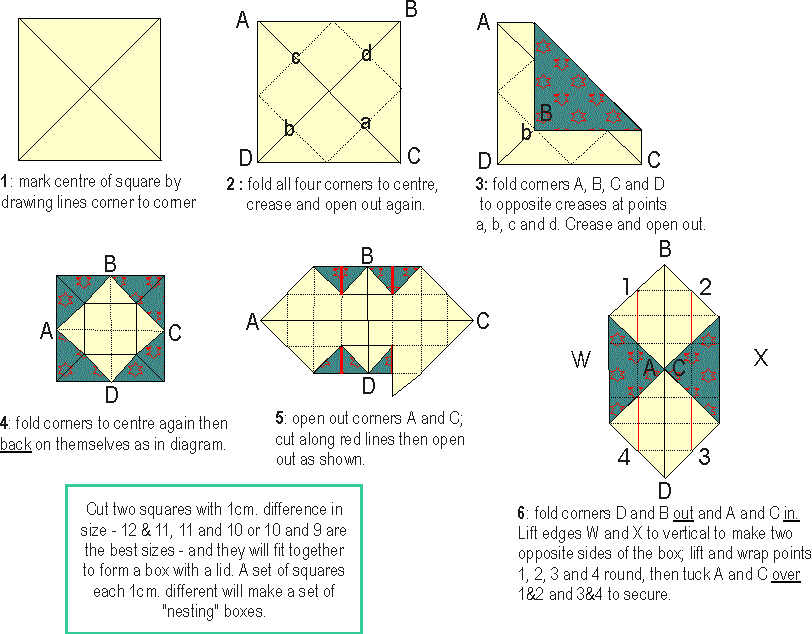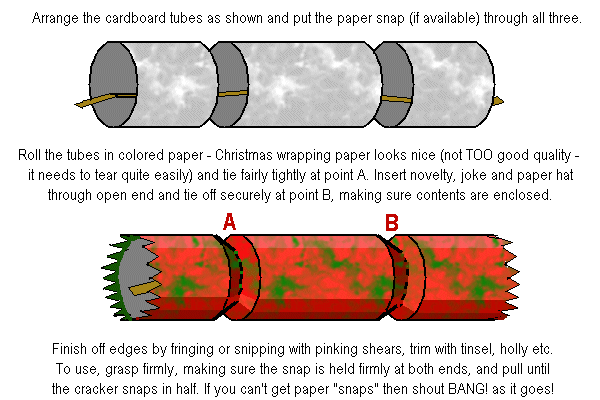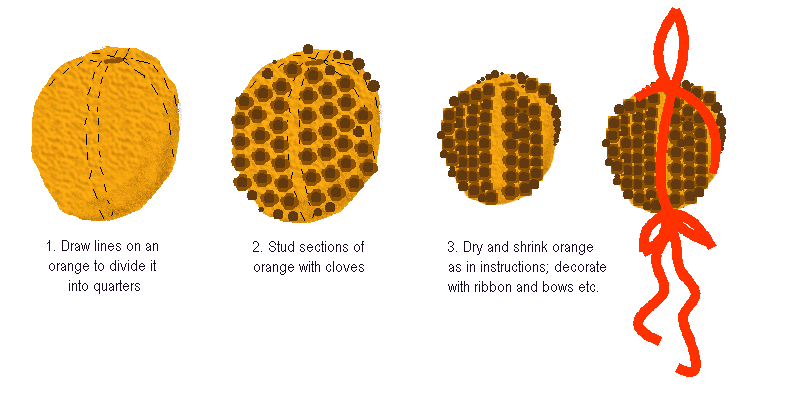
Some Christmas Craft Ideas
RECYCLE THOSE CHRISTMAS CARDS!
Use the printed fronts of your old cards to make lovely new gift boxes: they look complicated but once you get the hang of them you will be amazed at how quick and easy they are!

CHRISTMAS CRACKERS

POMANDERS
Pomanders were made in mediaeval England and even later to disguise the foul smells rising from the streets; they were either hung round the neck or carried in the hand and sniffed frequently in an attempt to counteract the effects of lack of sanitation and basic hygiene, to say nothing of the results of all traffic being horse-drawn!
Over here in the UK we have a wonderful children's TV programme called Blue Peter, it's been running for YEARS!! and every Christmas they demonstrate how to make pomanders to use not as deodorants but as Christmas decorations.
Choose small/medium oranges (NOT the Satsuma/mandarin type - REAL
oranges.) First mark 2 lines round the orange, from stalk-end to flower-end, dividing the orange into 4 equal parts - it doesn't matter if the mark rubs off once you get started. Push cloves in, stalk-end first, all around the orange leaving a half-inch gap along these lines - leave a small gap between the cloves as well, as the orange will shrink as it dries. (If the skin is tough, start the holes off with a nail, pencil - anything with a point!) You will then have four outlined sections on the orange - fill these in with cloves, but don't pack them too tightly as you need to allow for a little shrinkage.
Now put the clove-studded orange in a PAPER bag and add about a
tablespoonful of talcum powder. Try to find unscented or very slightly scented talc if you can, or baby powder as this is usually not too strong. Even better, dried orris root (sometimes available from health food shops) is completely unscented and will do the same job. Seal the bag, leaving as big an air-space as possible. Place the bag in a warm, dry place - I always use the airing-cupboard, alongside the hot-water tank. Leave for about a month - the exact time it takes depends on a lot on the size and juiciness of the orange.
When dry - they will be smaller, the cloves will have packed together and they will be rock-hard and smell divine - dust off any powder left clinging to the pomander, tie narrow red ribbon along the gaps you left along the lines marked at the beginning, making a hanging loop at one end and a bow and dangly bits at the other. They look lovely hanging on the Christmas tree and complement the scent of pine if you have a real tree, or you can hang them in your wardrobe.
